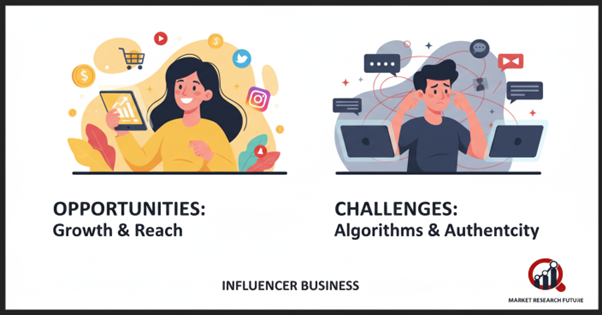Influencer business opportunities and challenges

Influencer business opportunities and challenges
"Influencer" is a popular term in today's digital world, and for good reason. Influencers have become important voices that connect brands with customers because social media affects what people buy. They build trust, start trends, and turn personal brands into successful businesses. But influencer marketing isn't all fun and games; there are also problems that both creators and brands need to be careful about.
Why Are Brands Working with Influencers?
For brands, influencers are a way to tell real stories and connect with real people. Influencer marketing doesn't interrupt people with ads; instead, it fits right into conversations that followers already trust. Brands can build trust by sharing content that people can relate to, and they can also reach loyal and engaged communities through partnerships.
Influencers do more than just give brands exposure; they also help brands seem more human. They let businesses talk directly to small groups of people and make emotional connections that regular ads often miss. Collaborations can also start important conversations, set trends, and make people loyal for a long time. Brands make sure their message resonates with their target market by working with influencers who have similar values.
What Makes an Influencer Different from a Brand?
A brand is based on goods or services, while an influencer is based on personality, trust, and connection. Brands work on making ads, while influencers work on making groups of people. When these two things come together, they make a powerful ecosystem that combines creativity with business to tell stories that matter.
How Much Should You Spend on Influencer Marketing?
The value of working with influencers depends on how real and engaged they are, not just how many followers they have. To choose the right influencer, you need to know who their audience is, how well they fit with your brand's values, and whether you can work with them for a long time. Even though budgets are different, the real investment is in making real connections that lead to real brand advocacy. This is because trust is the real currency in influencer marketing.

Leave a Comment